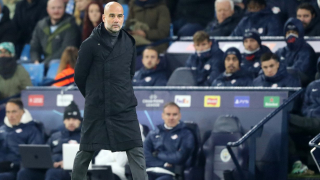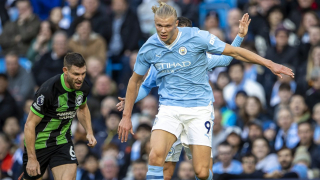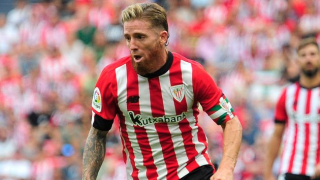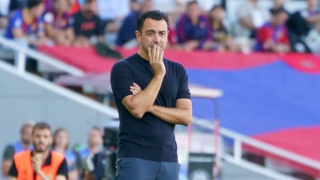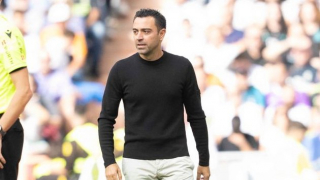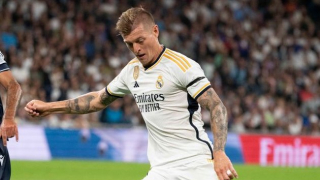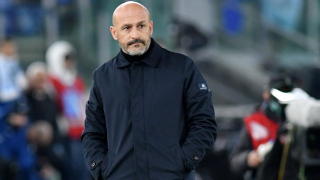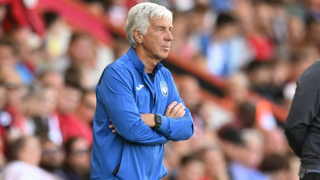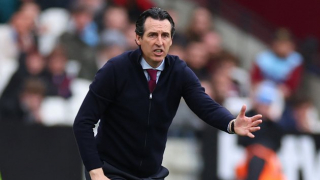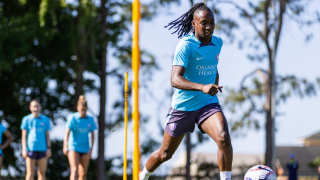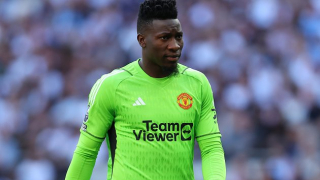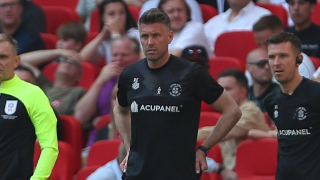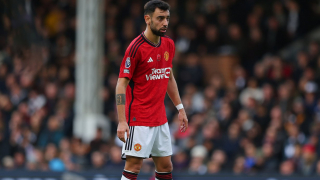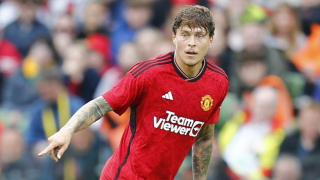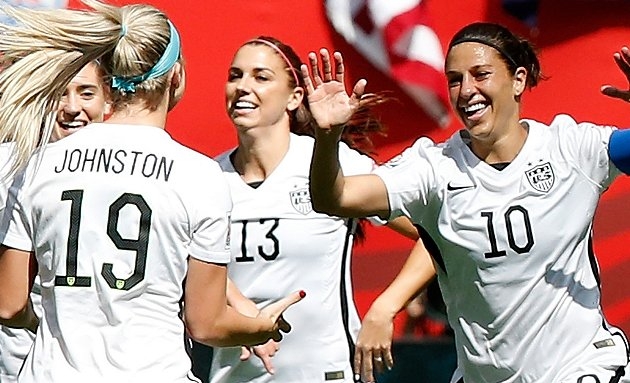This week, as part of our series reviewing recent books on the women's football scene, we look at Caitlin Murray's new book on the women's game entitled: The National Team: The Inside Story of the Women Who Changed Soccer (Published by Abrams Press—New York—2019).
This book is outstanding because it is not just a repetition of game stories and highlights of the many on-field successes of the U.S. Women's National Team during the Women's World Cup and Olympic Games era. Don't get me wrong—Murray can tell a great game day recap as she does with the classic 4-3 2012 Olympic Games Semifinal U.S. win over Canada (Chapter 18). However, for the most part, Murray dives into the women's team's battle for economic and playing condition equality, presenting detailed information on the negotiations that took place with U.S. Soccer around new national team contracts, including how they changed over time to include specific needs such as maternity leave (Chapter 12) and compensation for playing in the Federation-controlled National Women's Soccer League (Chapter 19). From the evidence and quotes that Murray compiles, the book doesn't paint a strong picture of the Federation's leadership over the years in their dealings with the women, even after the women won the first FIFA World Championships in 1991 in China and then the first Olympic Games on home soil in 1996. Their outstanding success in the Women's World Cup in 1999—an iconic event for women's sports in general—when they won on home soil and the players became cultural standards to many Americans—particularly for youth—actually was when the women's battle with their federation ramped up the confrontation levels.
Murray uncovers some great quotes from past women's advocates within U.S. soccer such as Marty Mankamyer, who was a U.S. Youth Soccer Association national leader and U.S. Olympic Committee board member, and one of the early leaders in getting women's soccer added to the Olympics. Mankamyer said when the U.S. team first started in 1985, "Women's soccer worldwide at that point wasn't very prevalent or supported. There were less than a dozen bonafide teams that participated in international games" (Page 6).
Alan Rothenburg, who did so much good for the sport in landing the 1994 World Cup for the U.S. and drove the launch of MLS, said when talking about the team in 1991 which qualified from CONCACAF for the first FIFA sponsored Women's World Championship, "The blunt truth is, I didn't even know the women's side of the game existed in the United States at that time" (Page 10).
Even before the 1999 tournament Mia Hamm, the star of the team, said that she would not appear at the Women's World Cup draw unless the federation made some concessions. The draw is an important kickoff for every FIFA tournament and a major promotional event—assigning teams for group play and to particular venues in order to determine the matchups' for the tournament—and Murray wrote, "It would've been a public embarrassment if Hamm didn't show up. The federation relented and made a deal" (Page 57).
An interesting quote was from former men's U.S. National Team forward and then announcer and current Las Vegas Lights USL Championship team head coach Eric Wynalda who said, after the men's side finished last among 24 teams in the men's World Cup in France in 1998, "Nobody ever says this out loud, but I'm going to; not until Brandi Chastain saved it in 1999 did we have a good feeling about this sport. The boys had blown it" (Page 48).
After the 1999 World Cup tournament success, Murray records, "For some reason, U.S. Soccer president Robert Contiguglia and secretary general Hank Steinbrecher wanted to send the players on tour in South Africa and Egypt, when interest in the team at home would be at an all-time high. To this day, the players don't understand what U.S. Soccer's higher-ups were thinking." Murray continues: "To say the federation lacked foresight or ambition to help the national team keep up its momentum is to put it mildly. There was no strategy to grow interest in the sport from the federation responsible for it, to say nothing of cashing in and hosting games that would sell lots of tickets. It was a strange response from the federation that only deepened the team's mistrust of their boss" (Page 59). The players initiated a post-tournament victory tour—12 cities in indoor facilities with sponsors—that the federation eventually got on board with and cancelled the ill-conceived African tour (Pages 58-63).
Murray also discusses quite convincingly that, when the WUSA women's professional league was trying to make efforts to launch (1997-2001), that Major League Soccer principals (which launched only in 1996 and was struggling in some markets) were threatened and tried to impede the WUSA's launch, even at one point planning to launch a women's league as an adjunct of MLS—though their sincerity was always questioned, as I covered those efforts closely at the time. Murray wrote, "MLS was a hostile force to what we were doing," says Amos Hostetter Jr., who founded the Boston Breakers. "There was no element of cooperation from them and, in fact, they were against us. A lot of scheduling was set up to conflict with our games. They were of the view that if anyone was going to have a successful soccer league, they should do it" (Page 88). It is ironic that over a decade later, when the third attempt at a women's professional league was being planned and launched (the National Women's Soccer League or NWSL)—albeit under the direct stewardship of U.S. Soccer—the Portland Timbers of Major League Soccer and their owner Merritt Paulson were crucial to its successful launch. Now at the end of its seventh year; the league has four clubs owned by MLS sides (Portland, Houston, Orlando and Utah, with Atlanta United and Sacramento Republic expected to add sides by 2021 or 2022).
Unfortunately, the 2003 WWC did not have the impact of the 1999 event as the federation had only a few months to organize it after FIFA switched it from China to the U.S. on short notice after the SRS virus breakout. It was never going to be the cultural flashpoint of 1999 in part because it was during the start of the NFL season but still it was artistically a strong tournament, showing the improvement in the women's game globally. The WUSA folding five days ahead of the start of the tournament unfortunately cast a menacing shadow over the event, particularly for American players wanting to play after college and unsure what they should do next to try to continue a soccer career path. The U.S. defeated North Korea in the group stage in Columbus; coincidently the Koreans' preparation was not what they wanted because their U.N. Embassy staff in New York was tasked with looking at cities in the Mideast and East Coast to host their training camp for free (rather than focusing on nuclear non-proliferation dialogue which was taking place at the same time) with the result that they trained in public parks at time—you do get what you pay for. Fantastic crowds in Portland would be leveraged by the NWSL when it first launched—the only one of the three women's professional soccer leagues to establish franchise in the soccer-mad Pacific Northwest. The WWC final and third place match—in which the Americans defeated Canada in the latter and Germany overcame Sweden in overtime to win their first ever Women's World Cup—in the new LA Galaxy purpose build stadium in suburban Los Angeles was a tremendous setting, despite the final starting at 8 am local time on a Sunday.
In the negotiations between the players and the federation in 2005—after the team won Gold in Athens, Greece at the 2004 Olympics—MLS would come up again in USWNTPA lawyer John Langel's list of concerns including;
"The commitment of $10 million to build soccer stadiums for a for-profit professional league for men, Major League Soccer ('MLS');
The Commitment of funds to play Major League Soccer reserve players, again using not-for-profit funds to support a for-profit league that is at no current risk of failure;
The recent decision to avoid scheduling events at or near certain MLS cities so as not to adversely affect the MLS while conducting the Women's Post Olympic Victory Tour.
The decision to assign the USSF's marketing rights to the marketing arm of Major League Soccer, thereby benefiting the MLS and ending any attempt to appeal to sponsors of women's sport" (Pages 114-115).
We've written about the needs for NWSL reserve teams in the past while the women's national team members' marketing rights has been addressed in recent years with the players now owning and managing the marketing side of individual image usage. This was very interesting information and should yield huge benefits for the women players in the years to come (see below).
Of course there was a second professional league after the demise of the WUSA—Women's Professional Soccer (WPS), which operated from 2009-2011, launched during the Great Recession. The league lost teams after year 2 (including the Chicago Red Stars who operate today in the NWSL) and needed a sixth team for their third season and turned to an unknown telecoms entrepreneur named Dan Borislow. Murray wrote, "At first, no one at the draft [2011 College Draft at Baltimore] realized [Mick] Lyons [now an assistant coach at Fairleigh Dickinson University in New Jersey] was there on behalf of majicJack (formerly the Washington Spirit franchise, a team that was quickly moved to Borislow's home community of Boca Raton, Florida shortly after the draft). There has been no announcement or press release about the coaching hire and Lyons was prohibited by owner Dan Borislow from talking to the media" (pages 153-154). This reporter covered that draft—which for some reason was held at the NSCAA Convention in Baltimore but didn't allow fans or players to watch. Lyons didn't talk to the media but 1999 World Cup hero Brianna Scurry reluctantly did—as she had days before been announced as the team's new General Manager—an appointment that didn't last long. This reporter asked Scurry 5-6 consecutive questions about the plans for magicJack to stay in D.C. or move to Florida and rumors of plans to exceed the salary cap by signing all-stars from the U.S. national team and elsewhere—I looked at my four other colleagues as I didn't want to dominate their time but they waived me on. We didn't get many answers and my impression was that Scurry had no idea herself about what Borislow was planning and she ultimately didn't move to Florida with the franchises, but one reporter said, "You were asking what we all wanted to know. The only hope for WPS to survive is this franchise." Alas, that hope quickly went up in a puff of smoke; owner Dan Borislow ignored league directives, belittled players and ended up suing the league, which had much lower resources than Borislow for a lengthy court battle and the league folded at the end of the 2011 season.
Note: A few weeks after that draft, this report started a string of interview with Borislow, who would typically contradict what he had said on earlier calls; it was clear that he was developing his plans on the fly, or a less kind description was 'on a whim' and with that club, everything was subject to change.
There is one crucial error in this book, on page 147, the first WPS champs were not the Los Angeles Sol—they hosted the final—but rather Sky Blue FC led by interim head coach Christine Rampone. Sky Blue FC, an afterthought as the last side in the playoffs, had to play 3 road games in route to the podium and everyone—including U.S. national team star Abby Wambach in a pregame event with the media and fans at the stadium—thought the Sol would not be denied, but something told me that Sky Blue was on a roll. Rampone told this reporter after the game that she didn't want to continue player coaching at this point but just wanted to continue her coaching career. I still think she would be a wonderful coach in the league or with a national team. Wambach went on to be a player-coach with magicJack during the chaotic 2011 WPS season.
For fans and followers of the NWSL, Murray does a particularly good job on clarifying the development of NWSL by U.S. Soccer and negotiations with the player union (pages 189-192). The players' association lawyer at the time—John Langel—said, "The issue with the NWSL was commitment. The players had to make a commitment that they essentially would play in the league for two of the four years of the contract. That, in the end, was the big concern" (Page 199). Murray summarized, "It was a bit of a leap of faith on the players' part—not just to agree to play in this league that they didn't know much about but to tie it so directly with their national team contracts. For the players who wanted a league and saw it as vital for the growth of the women's game, it was worth taking the chance" (Page 199).
Murray notes that the women's national team players not only faced problems with U.S. Soccer but with FIFA as well, with the terribly inappropriate quote from now disgraced former FIFA Secretary General Jerome Valcke in 2014 unfortunately far too typical of the world body's attitude at the time, "We played the 20th men's World Cup in 2014, when we are now playing the seventh Women's World Cup. We have still another 13 World Cups before potentially women should receive the same amount of [team prize earnings] as men" (Page 223). Murray then calculates that at the 2067 Women's World Cup they should be able to win as much as Germany did in 2014. Any guesses how much the men's payout will increase within the next 48 years? This was truly stunning information and an important issue to monitor in the future.
One huge value of this book is the detail on the financial agreements for the national team as well as the problems with WUSA and WPS and even early sponsorships deals for Mia Hamm and Michelle Akers (Chapter 2). Murray presents tremendous details on the financials, including the bizarre situation after the 2015 WWC in which the federation paid each player $10,000 each and gave them first class air tickets to attend their NWSL teams game that week, even though they weren't playing (Page 242).
The detail of the recent sponsorship image battle that the U.S. national team players fought with the federation was quite fascinating. Murray explained, "But while U.S. Soccer was making a windfall with higher ticket prices, the players didn't see anything from it other than the $1.20 per ticket they'd negotiated in 2013. While U.S. Soccer's merchandise for the national team flew off the shelves, the players didn't get anything from that. The team's popularity was surging but they weren't in any position to capitalize on it" (Page 244). Murray quotes Megan Klingenberg, one of the leaders of this battle for image rights, "I thought it was bullshit," says defender Megan Klingenberg, who played every minute of the 2015 World Cup as a left back. "All these people are making money from our likeness and our faces and our value and we're not. We're only getting money from our winnings, and that doesn't seem right. We didn't have any rights, she adds. We had basically assigned our likeness rights, for sponsorships and licensing, to U.S. Soccer to do with them whatever they wanted" (page 244). The players ultimately set up their own marketing company (REP Worldwide) to capitalize on their rights with sponsors. "With licensing merchandise, the players controlling those rights going forward is a huge deal. Becca Roux [USWNT Players Association Director] says. It gives them an ability to monetize something that otherwise wasn't being monetized. Just because there wasn't any authorized product doesn't mean it wasn't happening—it was being done in an unauthorized way and players weren't capturing the royalties" (Page 289).
Murray also shows how the women's team was more profitable than the men's teams in 2016 and 2017 from the federation's own financial reports—when the federation had always stood by the opposite conclusion for years (Pages 249-252). The CBA contract details is also riveting (Pages 258 and 282-288).
This book certainly catches up the reader on the background behind the current controversy between the U.S. National Team Players Association and the Federation for equal pay and treatment. It raises another concern as U.S. Soccer—which has invested between 10 and 15 Million dollars on the NWSL since 2012 (depending on which figures you believe)—eventually wants to scale back or step away completely and have an independent group operate the league. It will be interesting as the league has a dichotomy between clubs aligned with professional men's sides (5—4 in MLS and 1 in the Second Division USL) and independent sides, with not a lot of progress short-term on the expansion side.
This is an outstanding book and very well written and researched and incredibly important for anyone involved in women's football contract negotiations, even individual players anywhere in the world, to understand the difficult process that the U.S. Women faced, in a country largely supportive of women's sports. One minor criticism for the editor is that the proofing needs to be better as there are a lot of missing words, some of which created incorrect tense usage, but are not the author's problem.
Tim Grainey is a contributor to Tribal Football. His latest book Beyond Bend it Like Beckham on the global game of women's football. Get your copy today.
Follow Tim on Twitter: @TimGrainey

